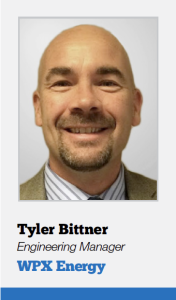The Northern Plains Resource Council (NPRC) has asked the Board of Oil and Gas Conservation to commence rule making to impose quarter mile (1,320 ft) setbacks of drilling rigs from occupied dwellings. This is a greater distance than the proposal struck down before the legislative Senate Natural Resources committee just months ago, after ample testimony on both sides.
NPRC claims that because other states have imposed setbacks, Montana should follow suit for the benefit of landowners. However, existing statute and administrative rules, along with the structure and function of the BOGC, are a made in Montana solution that works. Using a checklist of out of state rules and regulations to shape policy in Montana is not a good idea. Doing so neglects to take into account those attributes which are unique to Montana.
This Wednesday, at a public meeting before the Board of Oil and Gas Conservation (BOGC), the Montana Petroleum Association (MPA) will be providing comments on how implementation of the proposed rule would negatively impact oil and gas opportunities in Montana, siting that:
- Montana’s drilling and permitting activity pales in comparison to other states who’ve elected to impose setbacks, especially with consideration to densely populated areas
- Other states do not have the same protest ability that Montana landowners do with regard to oil and gas drilling
- The public, including land/surface owners, have considerable access to the BOGC
- Montana’s BOGC is set up to mitigate concerns on a case by case basis; ensuring responsible and efficient development of mineral resources
- If imposed, drilling opportunities in Montana would be severely impacted, with many small and exploratory oil and gas operators essentially placed out of business without the ability to drill into small target formations
- Many claim horizontal wells have greater flexibility in surface placement, however, operators seek to evenly space wells within a DSU (drilling spacing unit)
- Setbacks would reduce the number of wells there could be in a given DSU (within the same lease), shorten laterals, thereby increasing wasted oil and gas reserves, and lessening both production revenue (including that to the state and counties) and royalty payments to mineral owners, which include universities, hospitals, and charitable organizations
- Setbacks neglect to recognize that minerals are the dominate estate (under common law) in split estate scenarios.
- Setbacks act as a taking of mineral owners rights without compensation
- Correlative rights of mineral owners are compromised by setback rules administered as a “one-size-fits-all” rule
- Potential legal conflicts exist with regard to treatment of existing leases under setback rules
- Surface use agreements are currently negotiated between landowner and operator, prior to drilling
- The BOGC sites less than a handful of cases wherein a surface owner came before the Board with a concern over the placement of a well
- The BOGC currently has the ability to exercise authority over well placement to mitigate surface owner concerns when necessary, based on potential harms
- Montana has a longstanding history of environmentally responsible development of oil and gas, without negative impacts on air, soil, or water
The rule would have widespread effects on Montana’s economy and on mineral rights. Mineral owners, royalty recipients, and oil and gas operators with an interest in preserving future drilling opportunities in the Treasure State ought to weigh in at the June 24th meeting at the Board of Oil and Gas Conservation office in Billings, 2535 St. Johns Avenue, at 1:00 pm.
Public hearings will follow at a date TBD, should the Board commence rule making.
Interested parties may contact the Montana Petroleum Association at mpa@montanapetroleum.org to stay updated on the issue, and to be notified of future opportunities for public comment.
Contact: Jessica Sena, 590-8675
#######







